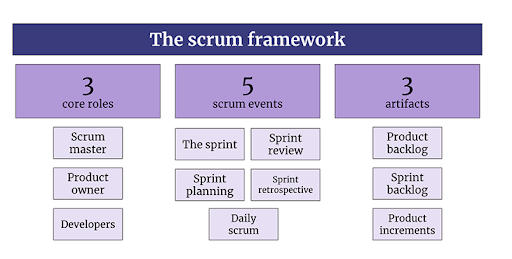“Economies of scale” is one of those old concepts that the unadvised might shrug to. It can be perceived as an outdated academic learning fit for college that has little to no application inside a modern tech business. Not only is such judgment wrong, but it’s also completely the opposite! Economies of scale are the backbone of product management.
No, this is not some flashy framework or discovery tool. No, you won’t need to use this every day during your roadmap planning. Yet, having this not-at-all-sexy concept as a cornerstone of your product thought processes may be the difference between your product’s success or demise in the long run.
Let’s get to it, shall we?
Table of contents
What are economies of scale?
The original concept dates back to Adams Smith’s work in the 18th century and has evolved a lot since its birth. The basics behind economies of scale are that the more of something you can produce with the same resources, the cheaper it is to produce each unit, therefore increasing profit.
Think of a farmer family: if they are capable of producing 10 pumpkins on a plot of land, each pumpkin would cost 1/10th of a family’s work. If they had two plots of land, they could produce 20 pumpkins, which means that each pumpkin would now cost 1/20th of the family’s work. Assuming that they sell the pumpkins for the same price as before, this new plot of land halved their cost per pumpkin, meaning that they doubled their profits.
The land is not scalable, but the family work is.
Nothing is scalable to infinity, though, and things have different scale potentials as well. Presume that the family can take care of 30 pumpkins at most at any given time. Giving them more than three plots of land won’t help them to reduce the cost of each pumpkin, but if you give them a tractor, maybe now they can take care of 150 pumpkins.
The tractor and the family are way more scalable than the family alone, which scales more than land on itself.
I could write an entire article on examples alone, but this is not the goal today. Here is a full Wikipedia article on the topic if you want to geek out, but I’ll limit myself to explaining it from a digital product management perspective.
Economies of scale for digital businesses
Pumpkins make for a lovely example, but this is not what you’re interested in. In the same way that the tractor leverages the farmer family, software is the pinnacle of scaled labor. It is the same very reason why the tech industry became the staple of a modern economy and why four out of the five most valuable businesses around the world are digital.
A couple of internal and external reasons explain how we got here:
Internal scale leverages
The two fundamental “machines” of a scale economy inside a business are labor and knowledge. The more specialized a job is, the more it scales. The more efficiency and effectiveness knowledge generates, the more labor scales.
Software enables a high degree of specialization in the sense that a small group of people can create code usable by millions.
Think of the early days of a startup — a ragtag group of people creates an app that, if all goes well, becomes a hit among its audience and generates billions of dollars of revenue for that small group. Expand that to several small groups of other people, and you have yourself Alphabet, Meta, and Microsoft!
As for knowledge, think of product management itself. Frameworks, agile methodologies, discovery — all of that is accumulated experience that should increase efficiency and effectiveness, thus enabling us to do more with the same amount of people.
External scale leverages
Technology plays the biggest role here. I could mention international regulation or public behavior as external leverages, but for digital businesses, usually, it is technological and scientific breakthroughs that lead the change in both.
The personal computer in the 80s, the internet in the 90s, smartphones in the 2000s, and AI today. All those technological breakthroughs becoming commonplace enabled the birth of entirely new industries, each more scalable than the previous.
We were 2.5 billion people in 1950, generating $9.25 trillion in GDP in the US with an average unemployment rate of 4.5 percent.
We are 8 billion people right now and are expected to produce $103.86 trillion in GDP in the US, with an average unemployment rate of 7.11 percent. Do the math and you’ll see that we’ve increased the value generated per human working in the US from $38 to $139 in a little more than 70 years.
“Very interesting, but what does that have to do with me?” one could ask.
Well… everything!
Subscribe to our product management newsletter
Get articles like this to your inbox
How to manage products for scale
Ever since we laid down our wrenches and pitchforks to migrate from an industrial and agricultural economy to a tech-service-based one, the scale has been the one thing keeping us afloat.
Being the creator of external scale levers is too tall of an order for most companies, but product teams should be looking for internal economies of scale at all times.
Upon finding strong enough levers, they increase profitability, which, in turn, guarantees a spot over the competition. This is because they can either sell cheaper or because they have more money to reinvest. Businesses that scale thrives while those that can’t eventually wither and die.
So…more objectively, how do you find those internal levers?
Be lean
As time went by, being “lean” lost much of its original meaning. In the same way a word said a lot of time stops making sense when you read it, the overuse of terminology drains what it originally meant.
Being lean should be about avoiding waste with discovery and fast iteration. The Lean cycle of “build, measure, learn” is the cornerstone of modern product culture and is about exactly that — finding the next internal economy of scale for your business.
Focus on outcomes
Imagine that somebody asks you to run faster, so you show up with a new shoe. Nobody asked you for a shoe, they asked you to run faster. That’s what focusing on output rather than outcome sounds like.
The only way you know you’re building towards scale is if you’re able to measure it. Increasing metrics by a flat two percent quarter over quarter is not scale, it’s just organic growth. Finding your internal scale levers should, at least, promote double digits increases.
Listen to your team
It’s almost guaranteed that you, the PM, won’t have the million-dollar idea. It will most likely come from engineering or design. This is no demerit by the way. It should be like that! Your job is to bolster the best ideas to fruition, not come up with them yourself.
The specialists from your team are the masters of their domains, which in turn make them way better solution explorers than you are. Limit yourself to find the best opportunities to tackle and let the team look for the best way to do it.
Be data-oriented
As important as it is to measure successes, you should be measuring problems also. The biggest pains are often the ones that, if addressed, bring the biggest levers.
You won’t have a double-digit increase on anything if you don’t tackle the double digits problems.
Conclusion
Economies of scale is an old concept, but its application remains very contemporary. Building towards scale, growth, exponentially — all of those words and expressions you might have heard in the past — are rebrands of this very concept.
Finding levers that scale the economics of your business, whatever the KPI, is the main reason why product managers and product teams exist the way that they do. As Marty Cagan would say, it’s not enough to build products that our customers love. They also must work for our business.
Featured image source: IconScout
Source link







Leave a Reply